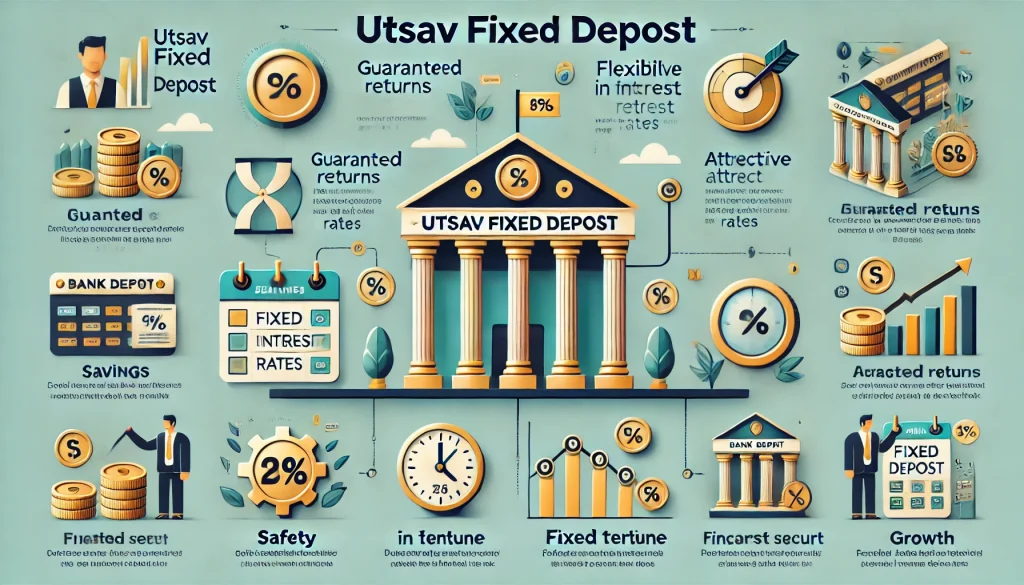
In the world of finance, Fixed Deposit Receipts (FDRs) are the most reliable financial documents issued as proof to FD investors. Offered by financial institutions and banks, it specifies the fund deposited in a fixed deposit scheme for a specific period at a predetermined interest rate.
Let’s comprehensively discuss the concept of Fixed Deposit Receipts, its essential components, benefits, and some considerations to guide all FD investors.
What is a Fixed Deposit Receipt?
A Fixed Deposit Receipt, commonly known as an FDR, is a certificate issued by a bank or financial institution as proof of a fixed deposit made by an investor. It can be also used as a legal agreement between the depositor and the institution, specifying that the latter will return the amount invested by a depositor along with the promised interest rate at the end of the tenure.
What are the Components of FD Receipts?
Let’s take a look at some of the key components of a Fixed Deposit Return:
1. Details of an FD holder
The main component of an FD receipt is the personal details or particulars of an FD holder, including the name and address of the depositor, age proof, customer ID and bank account number. These details ensure that the deposit belongs to the right individual holding an FD account. Moreover, all the details in an FDR should be the same as the details in Aadhar and PAN.
2. FD Tenure
A fixed deposit receipt also specifies the tenure or the time period for which the deposit amount will remain locked in with the bank. As mentioned in FDR, the tenure is predetermined and remains fixed until maturity. In most cases, the tenure of an FD scheme varies from 7 days to 10 years.
3. Interest Rate
Another key component of fixed deposit receipts is the FD interest rate. The interest rate once mentioned in FDR remains fixed until the renewal of an FD account. Therefore, it is in the best interest of investors to carefully verify the rates offered by their preferred bank before making a decision.
4. Maturity Amount
The maturity amount is the total sum the investor will receive at the end of the FD tenure, considering the principal amount and the accrued interest. By specifying in advance the total earnings of an investor that will accrue by the end of an FD tenure, the FDR helps them with financial decision-making.
5. Premature Penalty Charges
An FD receipt also mentions the penalty a bank charges if an investor chooses to withdraw their deposit money before the maturity date. This component ensures transparency and avoids potential discrepancies at the time of premature withdrawal.
6. Auto-Renewal
Many banks offer auto-renewal options for fixed deposits, which means that if the investor doesn’t withdraw the amount at maturity, the FD gets renewed automatically at the prevailing interest rate.
7. Nominee Details
If a depositor avails the nomination facility at the time of FD scheme booking, the bank issues an FDR specifying the nominee’s details. This detail mentioned in the FDR or fixed deposit slip ensures that the funds are transferred to the designated person if required at an unfortunate event.
What are Fixed Deposit Receipts Used for?
A fixed deposit receipt can be used in multiple ways under different circumstances. The following are some common cases when a depositor has to use an FDR.
1. During Premature Withdrawal
In case of premature withdrawal, a depositor/investor has to submit the fixed deposit receipt to their bank or financial institution. FDR acts as an ownership proof, allowing only the primary depositor to withdraw the FD investment before maturity.
2. During FD Renewal
A bank or financial institution proceeds with an FD account renewal only after receiving the FD receipt of the existing account from a depositor. Furthermore, the bank issues a new FDR to the depositor upon opening a new account.
3. To Avail of a Loan Against FD
Depositors applying for a loan against their FD investment need to submit a fixed deposit receipt as an alien to the bank sanctioning the loan. FDR is a document proof specifying that the FD investment will be now considered as a security against the loan.
Things You Must Check in FDR
After receiving a fixed deposit receipt from a bank, an investor must check and verify its components carefully. Here are some of the factors you must consider in order to do so.
1. Tenure
Make sure that the FD tenure mentioned in your receipt aligns with your financial planning and liquidity requirements. The tenure should be correctly mentioned in a receipt since this component determines when you can withdraw your FD investment from a bank.
2. Interest Rates
The applicable interest rate is one of the main factors an investor must check in a fixed deposit receipt. The amount of return you can expect from an FD investment depends upon the interest rate mentioned on the receipt.
3. Terms and Conditions
Go through all the terms and conditions mentioned in an FD receipt carefully and consult a bank representative if you find an error. Generally, the associated terms and conditions include TDS declarations that apply to the interest income earned from a fixed deposit. Moreover, be aware of the penalties involved if you withdraw the amount before maturity.
4. Auto-Renewal Option
You must also check the details related to the auto-renewal options of the FD account and verify the maturity date on which you will become eligible to renew or close the account.
5. Nomination
A bank issues a fixed deposit receipt specifying the particulars of a nominee according to the details mentioned in an FD account opening form. Therefore, it is advisable to double-check the receipt and make sure the bank has the right details.
Final Word
Hopefully, now you clearly understand what fixed deposit receipts are and why the bank issues it at the time of the FD account opening like an invoice. Simply put, it is an acknowledgement of an investment made by a depositor in a fixed deposit scheme. Therefore, make sure to ask the bank representative for an FDR after you have opened an account and keep it safe for future reference.
FAQs
Yes, there are certain fixed deposit schemes that offer tax benefits under Section 80C of the Income Tax Act for up to 5 years.
Yes, you can have multiple nominees for your fixed deposit, and you need to provide their details while opening the FD account.
In order to get a duplicate fixed deposit slip/receipt, a depositor/investor needs to submit a written application to the bank specifying the details of the original receipt. In some banks, a depositor also has to provide an indemnity bond and pay for additional charges.
No, it is mandatory for all depositors to provide their fixed deposit receipt at the time they withdraw their FD investment. In case a depositor has lost his/her receipt, they needs to apply for another FDR before FD withdrawal.
Yes, it is possible to procure fixed deposit receipts online at the time of FD account opening through the online banking facilities.
Disclaimer
This article is solely for educational purposes. Stable Money doesn't take any responsibility for the information or claims made in the blog.


